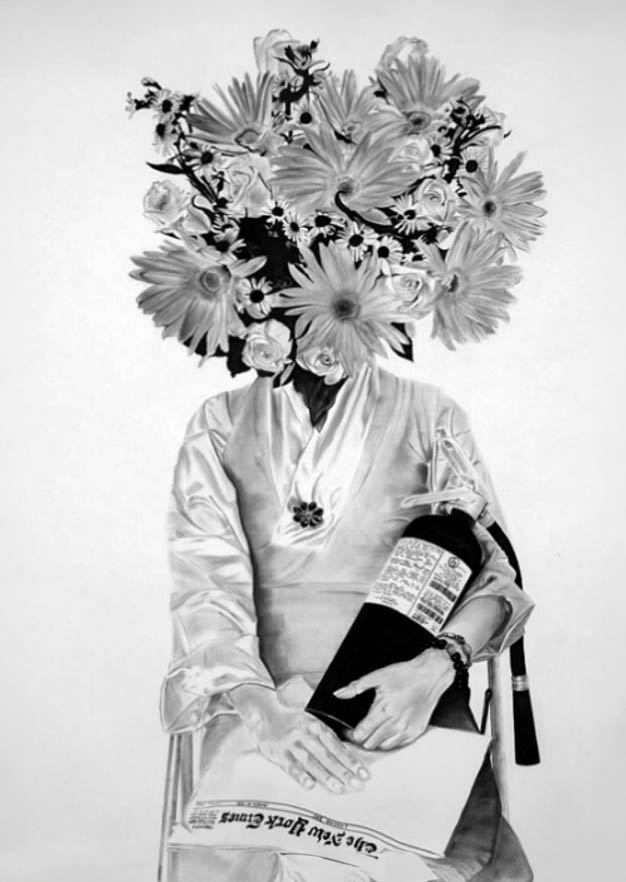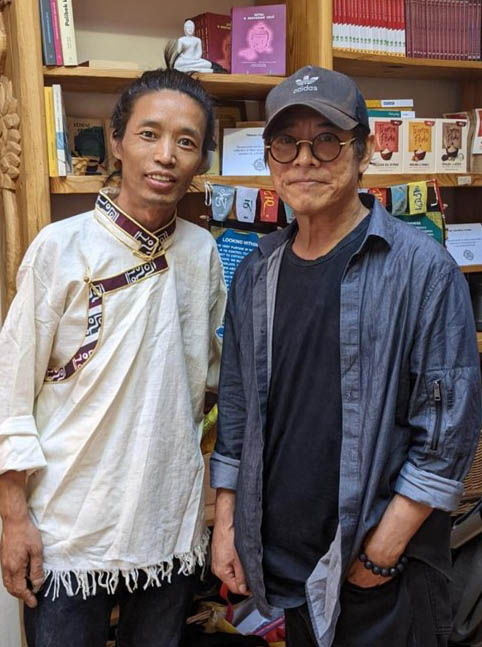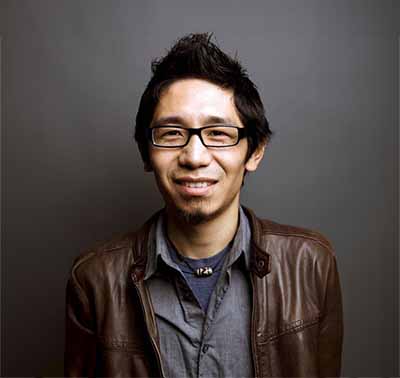OBITUARY
– Tenzin Dorjee, New York
Tenzin Dorjee* pays tribute to a friend who was born in Tibet under Chinese occupation rule, raised in India as an orphan, driven out of Nepal as an activist, rediscovered himself as an artist in America, and who kept going with an activists’ zest for life until his last breath.
Last week, we lost one of our dearest friends, Chungpo Tsering (1979-2024). And the world is a little darker for his absence –– a lot darker indeed. Chungpo gave so much to this world, to his people, to his community of exiled artists and activists, and to his ever expanding circle of friends and students and loved ones. A talented artist, a lifelong activist, a brilliant storyteller, a powerful dreamer, he was a creative genius who transformed everything he touched into a work of art. His untimely departure has left a planet-sized hole in our hearts.
He was the kindest, funniest, wisest, and warmest person I have ever had the pleasure of knowing. Beneath his unassuming personality lay an undeniable presence that helped him connect instantly with anyone he met, establishing friendship with strangers within minutes. When you hung out with him, listening to one of his hilarious stories, or just sitting there in wholesome silence over a cup of coffee or a glass of whiskey, you felt as if time had slowed down, you felt what a blessing it was to know this luminous human being.
He never rushed anywhere, with anything. He always did things mindfully, and he walked slowly and deliberately, as if he had all the time in the world. And he did in fact have more time on his hands than the rest of us, partly because he never held down a typical 9-5 job. After dropping out of TCV for failing eighth grade twice, he found himself in Nepal trying to make it as an underage shok-pé artist, designing carpet blueprints and selling them to Kathmandu’s famous rug factories. Once, when he was barely out of his teens, he accompanied a group of Western photojournalists to the Thai-Burma border, where he accidentally lost his team and luggage and had to survive on bananas for a month. It was during his stay in Chiang Mai that he first experimented with charcoal painting.
Upon returning to Kathmandu, he launched the first Tibetan contemporary art gallery in Nepal, the Gallery Of Modern Art (GOMA), which became a center of artistic exchange and a hub for political organizing. He would sometimes paint for 30 hours straight, forgetting to eat or sleep. In Chungpo’s science book, human beings needed three things to survive: art, shelter, and clothing. This obsessive dedication to his craft took a toll on his health. As Nepal turned into a Chinese satellite state following the rise of the Maoists, his gallery became a target of harassment by the Kathmandu police, and he left Nepal to seek asylum in America.
In New York, Chungpo lived as a house guest of ours in Astoria for many months, perhaps a year, but he never felt like one throughout his stay. As a guest, he probably had the lightest carbon footprint in history: he ate modestly, showered infrequently, and was never in the way of anything. He weighed so little even the couch he slept on didn’t suffer any wear and tear. He lived more like a family member, taking on more than his share of house chores and cooking duties.
One time, he rode the subway to the Brooklyn Bridge to shoot an album cover for the Nepalese musician Raju Lama and made something like $200 for a couple of hours of work. This was his first paid gig in America, and he was looking forward to celebrating the milestone. On his way home, though, just minutes before reaching our apartment, he got mugged by two boys, one of whom appeared to be holding a knife inside his pocket. We were relieved he wasn’t harmed, but we never stopped teasing him about this incident, for being “mugged by two high school kids!”
I was working at Students for a Free Tibet (SFT) in those days and Chungpo would regularly come down to our office on 14th and B to help out with all kinds of tasks, making posters, painting banners, shipping literature to our chapters, and entertaining the interns. One time, there were two little brothers (8 and 12, if memory serves) who had just arrived from Tibet and didn’t speak a word of English. Their teacher called and asked if we could find someone to tutor the boys after school so they could catch up with the other kids in their respective grades. I put Chungpo in charge of the boys and he taught them every Wednesday, starting with the alphabet and simple sentences. The boys learned fast, but they forgot fast too, and that got on his nerves a bit. This was the only time I saw him lose his patience, but even then he did not lost his temper. He remained committed and compassionate to the boys until one day, all of a sudden, their English was better than his.
We organized countless protest rallies in Manhattan (usually at the Chinese consulate, sometimes at the UN, yet other times at some corporate office) and almost as many house parties in Queens. Everyone loved being around Chungpo, so they would come over all the time. When the drinks ran out, the music and conversation carried on late into the night, often until sunrise. His preferred musical instrument was the djembe, and no one ever asked where or how he learned to play it so well. It was his business to know things no one else knew. He had an effortless sense of humor, and of course endless material, all top-shelf stuff; I never saw him make a joke that failed. On some occasions, his epic routines would give even our comedian friend Sonam Wangdue a run for his money. More than his jokes, though, his presence alone was usually enough to light up the room, to brighten the face of anyone who was having a rough day.
Whether we were gathered at Little Tibet in Jackson Heights, or at a gallery opening in Chelsea, or at one of SFT’s activist training camps in the Catskills, he was always the life of the party, surrounded by people who saw the spark in his eyes and felt the fire in his soul. He loved the raw energy of New York and the endless excitement of the city, but the east coast weather was not kind to him. The cold winters made his spine shrink and his fingertips swell. He coughed at the slightest provocation; everything, including central heating and air conditioning, was an irritant to his fragile respiratory system.
So he moved to California, where, to nobody’s surprise, he quickly became a local legend. His apartment, which he shared with Gyatso Chuteng at first and later with Tashi Bush, became the epicenter of life and laughter for a new circle of friends in the Bay Area. He frequented a bar called Melodee’s, whose Latino owner was so charmed by Chungpo that he hung a huge Tibetan flag on the wall next to the entrance. The local crowd reliably came to Melodee’s to see Chungpo every weekend, and his drinks were always on the house. The bartenders would offer to make him anything but he remained loyal to his beloved Jameson on the rocks. In California, his old symptoms temporarily subsided, and even his back seemed to straighten up. This unexpected return to youthful health earned him the nickname Benjamin Button in some circles.
He kept creating new art, diving deeper into his favored charcoal medium. A key theme that preoccupied him during this phase was self-immolation, and his sustained agony over the wave of protest self-immolations in Tibet was reflected eloquently in his art. Two of his charcoal paintings on the subject, perhaps among the best of his work, were featured in a group show at the Queens Museum from 2014 to 2015. He was an early and consistent contributor to Art for Tibet since its inception in 2009, an annual art auction that benefits SFT’s work. In 2014, he held a solo exhibit at Tibet House in New York. Titled Vagabond, the name of the show captured the essence of his identity as an exile who was born in Tibet under occupation, raised in India as an orphan, driven out of Nepal as an activist, and now rediscovering himself as an artist in America.
His art was inseparable from his activism. There was always a sharpie and a stack of ‘Free Tibet’ stickers in his pocket. When strolling around in the old hood or a new city, he would suddenly stop next to a parking meter or a famous building and slap a sticker on it just like that. He instinctively knew the best location, the ideal height, and the optimal angle for the placement of each sticker. If you are pleasantly surprised by a random Tibet graffiti or a sticker somewhere in the streets of New York, or under a bridge in Paris, or in a bar toilet in San Francisco, or outside the Chinese embassy in Prague, you may be standing before one of Chungpo’s subversive handiworks.
He was one of those rare characters who moved through life’s trenches with perfect equanimity and indiscriminate generosity, as if he had access to some higher truth about the universe, some deeper secret about the arc of human existence. No wonder he often ended up serving as the unofficial therapist to friends with unnamed traumas. He took it upon himself to help the suffering souls find a measure of comfort and healing, even as it remains doubtful if he himself ever recovered from the childhood trauma of losing his parents as a toddler. Beauty and tragedy inhabited his life in equal measure.
In 2015, Chungpo moved to India to join the Dialogue Artist Residency, founded and funded by his childhood friend Tenzing Rigdol, initially as a resident artist and later as managing director of the operation. Renting two buildings in Khanyara, located just outside Dharamsala’s Tibetan perimeter, the residency gave various degrees of accommodation and support to nearly thirty artists and affiliates for a few years until the pandemic shut down the project. Meanwhile the two friends also lobbied the Tibetan exile government’s Department of Education to promote art as a central feature of children’s curriculum rather than treating it as a peripheral non-subject in the Tibetan schools.
In 2019, launching a new collaboration with Tibet Open House in the Czech Republic, Chungpo moved to Prague, the cradle of the Velvet Revolution and the home of Vaclav Havel, the playwright-turned-president who was one of the closest friends of His Holiness the Dalai Lama. Little did we know that Prague was going to be the final chapter of Chungpo’s eventful life.
At one of the dharma teachings arranged by Tibet Open House in Prague, the Hong Kong actor Jet Li showed up and some of the organizers wanted to seat the kungfu star and his entourage in the front row. But Chungpo would have none of it. For him, the world is flat and all humans are equal, and this egalitarian principle must be reflected in the seating chart. He made Jet Li sit with the regular crowd, just like anyone else. But apparently, the humble actor so appreciated the experience of having his celebrity privilege revoked that he thanked Chungpo by giving him a plush pair of jeans he had originally bought for his daughter, who just so happened to have, wait for this, the same waist size as Chungpo.
For someone so full of life and spirit, Chungpo came perilously close to death a few times in his short life. Each time, he returned unscathed from the brink, stronger and wiser. Perhaps because of this battle-tested resilience, we felt more and more convinced that he would live forever, come hell or Covid. But following a near-death experience around Losar last year, when his doctors told him there was something very wrong with his lungs (he had previously had TB in Nepal), he started telling some of his friends he was not afraid of death, that he would have no regrets if he were to leave this world. Maybe he knew his time was up, or maybe he was just being philosophical.
Some friends speculate that he may have resigned himself to the fate of his lungs and was preparing for the ultimate journey. As a matter of fact, his understated spirituality took on a religious intensity over the last year. Nevertheless, I believe that he did not go gently into the good night, that he resisted the invitation from the other side, that he would not have chosen to leave quietly without giving his old friends a chance to throw him a party. The strongest evidence supporting this conclusion is that he had recently had a whole new set of teeth implanted, entirely replacing the old brown teeth that betrayed all his past tobacco use and plain negligence. This is how I know that up to the moment of his death, he was looking forward to life and living. Why else would you replace your teeth?
That is who Chungpo was, that is who Chungpo is. Wherever he is right now, whatever blessed realm or mystical dimension he may have checked into, with or without his luggage, it gives me a kick to imagine him walking around with a sparkling new set of teeth. His friends are in mourning down here, but out there somewhere, he must be smiling.
Author bio:
Tenzin (Tendor) Dorjee is a senior researcher at Tibet Action Institute and a doctoral student at Columbia University. He is the former executive director of Students for a Free Tibet.





